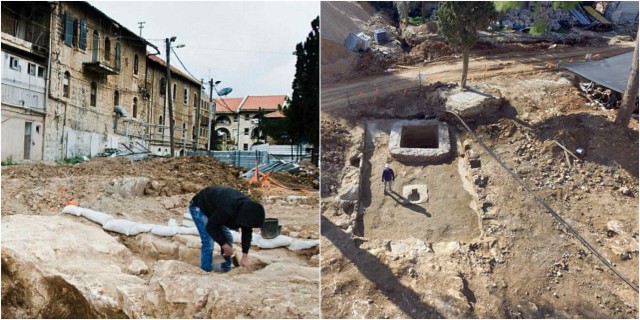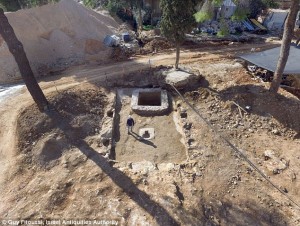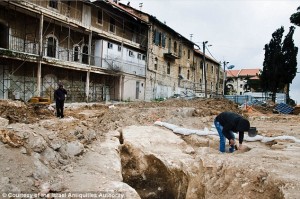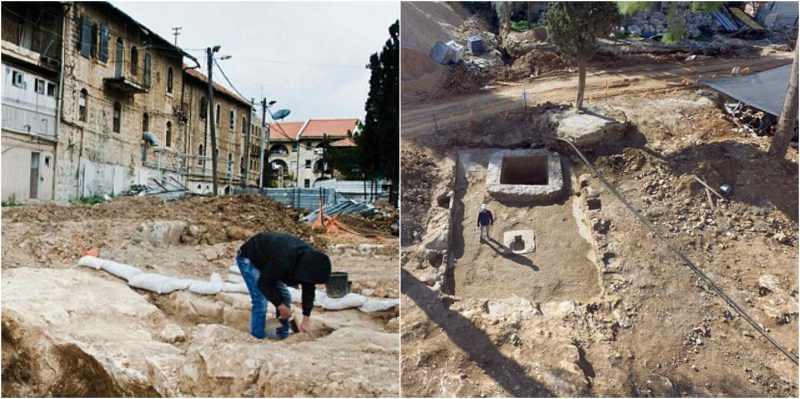
Just recently archaeologists were excavating an ancient estate that was built beneath a famous Jerusalem orphanage. What they found was surprising and unexpected – they unearthed a manor house, a large wine press, a Roman bathhouse, and a Jewish ritual bath known as Mikye.
After studying the artifacts further, they figured that the buildings and pottery found at the site date back more than 1,600 years; in other words to the Roman or Byzantine period. Some of the bricks found in the excavation site were stamped with the name of the Tenth Roman Legion, which would suggest that soldiers were garrisoned there. This unit played a major role in the conquest of Jewish Jerusalem in 70 AD.
The ruins were discovered by archaeologists from the Israel Antiquities Authority who were excavating that site by the Schneller Orphanage. The German Protestant orphanage operated in Jerusalem from 1860 until World War II. After the orphanage closed, the building was used to serve as a military site. The original project was to lay construction flats for the city’s Orthodox population.

The archaeologists first discovered a large wine press in the middle of the site. It included a pressed surface which was paved with white mosaic. In the center is a pit in which a press screw had been anchored. This would have helped in extracting the maximum amount of juice, or must, from the grapes. Next to the press screw, around the edge of it, were eight cells which were used to store the grapes. Historians believe that the cells were used for storage, where people mixed the must with other ingredients. This was so that they would be able to make new flavors of wine. The experts think that the winery had served the residents of the large manor, as those who lived there had made their living by making wine.
Another thing that was found during the excavation was the foundation of a bathhouse. It included terracotta pipes which were used to heat the building. Those bricks found near the bathhouse also had the name of the Tenth Roman Legion stamped on them. That legion was one of four Roman legions which participated in the conquest of Jewish Jerusalem. The units had remained garrisoned in the city until 300 AD.
One of the archaeologists on the Jerusalem district, Amit Re’em, said that they had found a unique bathhouse with specially-made ceramic pipes. Hot air would flow inside the pipes in order to warm up the places where people took their baths. He added that it was the most beautiful thing they had found at the site.

Among the Roman Legion’s main centers, there was one in the area of Binyanei Ha-Uma, which is located about 2,625 feet from the current excavation. At that site, there was a large pottery and brick production center discovered. Archaeologists believe that the Schneller site, which was the form of a manor house, had been an auxiliary settlement to the main site in Binyanei Ha-Uma. They had also just uncovered an older Jewish settlement at the site which dated back to the Late Second Temple Period, roughly around 538 BC to 70 AD. Re’em said that near the bathhouse they had found a pit which was believed to have been a ritual bath from the Second Temple Period. It was found full of ceramic and glass vessels.
Every single item that the team found is evidence that nearly 2,000 years ago, the Romans had come to Jerusalem after the destruction of the city in 70 AD. The soldiers had actually occupied the houses, which is why there was rich archaeological evidence found from that period. Re’em also stated that Jerusalem is so magical because everything is built in layers, resulting in hidden secrets all over the city. The director of the Israel Antiquities Authority, Alex Wiegmann, said that Jerusalem hides many ancient artifacts. A person might just kick over a stone and find an ancient artifact.
Each and every lost site or artifact takes the archaeologists one step closer to piecing together ancient Jerusalem and how its people lived there thousands of years ago.
